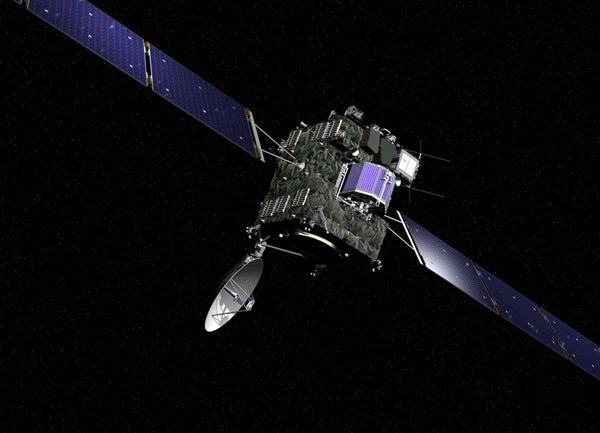When orbiting a comet, there’s no straightforward path to getting the right orbit. As this video from the European Space Agency (ESA) demonstrates, its Rosetta probe had to make several bizarre passes of Comet 67P just to get the right angle on the comet.
In the video description, the agency also points out that, at least once during a close flyby, the craft entered safe mode. While normal orbital dynamics suggest that orbits and orbital maneuvers are ovular if not circular — and you burn engines when reaching a certain point in orbit to make the oval less oblong and increase or decrease passing distance — it’s an entirely different game when your object of interest is around 2.7 x 2.5 miles (4.3 x 4.1 km). Not only that, but it has a low density that made it even more of a challenge.
That’s what makes the Rosetta mission such an amazing success. Despite setbacks like the Philae lander’s ill-fated landing that put the solar powered probe out of range of the Sun, the mission was still a rousing success, returning incredible details about comets, an ancient remnant of the solar system’s formation.
The craft is currently being prepared for a controlled landing on Comet 67P as the probe moves into the outer solar system. Considering all the challenges you can see in the video just making the mission work, it’s had an amazing run.










